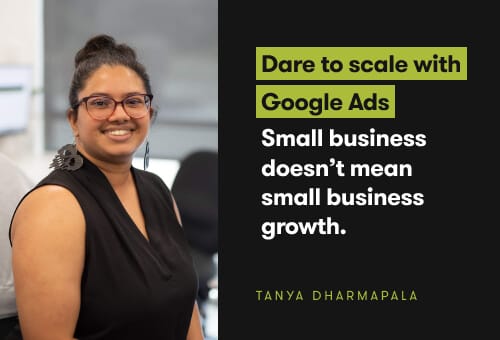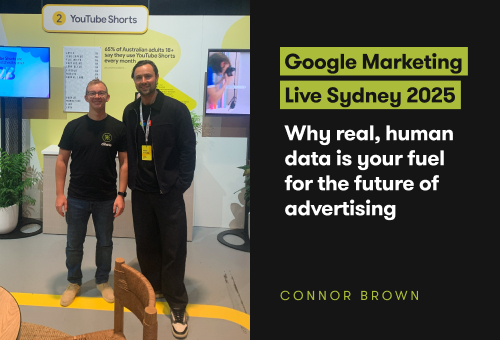
Here's everything you need for a bulletproof brand strategy framework


Creating a brand is like crafting a personality. It's more than just a pretty logo; it's about connecting with people on a deeper level. This guide will help you build a strong foundation for your brand, one that resonates with your audience and drives growth.
1. Start with what makes your brand, your brand
Before diving into the flashy stuff, let's define your brand's core. Think of it as the heart of your brand, and what makes it tick.
What’s your brand’s purpose?
Your purpose statement (sometimes known as your mission statement) is the reason your brand exists. It's why you get up in the morning (or turn on your computer). It's what drives you to create amazing products or deliver incredible services.
A strong purpose:
- Is built from your why: What does your brand believe in? What motivates you and your team?
- Focuses on your customers: What problem do you solve for them? What impact do you have on their life?
- Embodies your values: What do you stand for?
- Inspires your team: Does it resonate with them and make them excited to come to work?
For example, Bunnings Warehouse's mission is to save Aussie homeowners money. Simple, right? But it's also powerful.
Where do you see your brand in 5 years? (Or 10, or 20?)

Your vision statement is a bold declaration of where you want to be and what you want to achieve. It’s more than just a dream; it’s a clear and inspiring picture of your company’s potential.
A strong vision statement should:
- Set a challenging goal for your team to focus on.
- Ignite passion and excitement among employees and customers.
- Be easily understandable.
- Look ahead, not back.
- Build on your company's purpose.
For example, Qantas aims to be the most trusted airline in the world, reflecting their ambition and customer focus.
Core values
Your core values are the bedrock of your company culture. They shape your decisions, actions, and interactions.
Effective core values should:
- Truly reflect your company's character and beliefs.
- Motivate and energise your team.
- Guide daily decisions and behaviours.
- Assess through actions and outcomes.
- Be limited in number to maintain impact.
For instance, Canva's values, such as "Be kind" and "Simplify complex things," guide their creative and easy-to-use method.
Identifying and refining your core values

Your company’s core values define who you are, what you stand for, and how you operate.
The discovery process
- Reflect on your company's history to reveal underlying values.
- Involve your team to gather input from all levels.
- Understand what your customers value and how your company aligns with their expectations.
- Identify competitors' core values and differentiate yourself.
Refining your values
- Avoid vague or generic terms.
- Ensure your values truly reflect your company culture.
- Motivate employees and customers.
- Guide decision-making and behaviour.
- Focus on a small number of core values.
Once you've identified your core values, it's essential to communicate them effectively throughout your organisation. This includes:
- Ensuring leadership embodies the values.
- Incorporating them into performance reviews, hiring processes, and company culture.
- Tracking how well your company lives up to its values.
Measuring the impact of your core values
Here are some key metrics and methods:
Employee metrics
- Employee satisfaction: Measure how employees feel about the company culture and their alignment with core values.
- Employee engagement: Assess employee motivation, commitment, and productivity.
- Turnover rates: A high turnover rate might indicate a misalignment between employee values and company values.
- Employee advocacy: Measure how often employees share positive company experiences on social media.
Customer metrics
- Customer satisfaction: Assess how well your company lives up to its core values in customer interactions.
- Net promoter score (NPS): Measure customer loyalty and advocacy.
- Customer lifetime value (CLTV): Determine the long-term value of customers.
- Social media sentiment: Analyse customer sentiment towards the brand and its values.
Financial metrics
- Revenue growth: Assess the impact of core values on business performance.
- Profitability: Measure the financial impact of a strong value-driven culture.
- Return on investment (ROI): Evaluate the ROI of initiatives aligned with core values.
Other metrics
- Internal communication: Measure the frequency and effectiveness of internal communication about core values.
- Leadership behaviour: Assess how leaders embody and reinforce core values.
- Recruitment and onboarding: Measure the alignment of new hires with company values.
Remember, these metrics are just a starting point. To see how well your core values are working, use both numbers and feedback. By regularly assessing your progress, you can ensure that your core values remain a driving force for your business.
2. Conduct a brand audit
A brand audit helps you understand where your brand stands, what’s working, and what needs improvement. It’s a deep dive into your brand’s current state to inform your future strategy.
By looking at your brand's strengths, weaknesses, opportunities, and threats (SWOT), you can learn more about where you stand in the market.
Look at your brand from the inside out and the outside in. What do your employees think of the brand? How do customers perceive it? What are your competitors doing?
SWOT analysis
A SWOT analysis is like a snapshot of your brand's current situation. It helps you understand your strengths and weaknesses, as well as opportunities and threats.
Strengths
- What are your brand's core competencies?
- What do you do better than your competitors?
- What are your unique selling points?
- What are your internal resources and capabilities?
Weaknesses
- What are your brand's limitations?
- What areas do you need to improve?
- What are your internal challenges?
- What resources are lacking?
Opportunities
- What external factors can you leverage?
- What emerging trends can you capitalise on?
- What new markets can you enter?
- What partnerships can you form?
Threats
What external factors could harm your brand?
What are your competitors doing?
What economic or political factors could impact your business?
What technological advancements could disrupt your industry?
By understanding your SWOT profile, you can develop strategies to maximise your strengths, minimise your weaknesses, capitalise on opportunities, and mitigate threats. This analysis is a crucial step in building a robust brand strategy.
Brand perception analysis
Understanding how your audience perceives your brand is essential for building a strong connection. You can learn important things about your brand by listening to customer feedback. This feedback can show you what your brand does well and where it needs improvement. It can also provide insights on how your brand can grow.
Create detailed customer profiles. Use these profiles to customise your communication, offerings, and solutions. Match them to the unique preferences and requirements of your audience.
Conducting thorough research is key to gaining a clear picture of your brand's perception. This involves:
- Surveys: Gather quantitative data by asking specific questions about brand awareness, image, satisfaction, and loyalty.
- Focus groups: Conduct in-depth discussions with a small group of customers to uncover their thoughts and feelings about your brand.
- Social listening: Monitor online conversations and social media platforms to understand how people talk about your brand.
- Competitor analysis: Compare your brand perception to that of your competitors.
Analyse your findings to uncover actionable insights. Look for patterns, trends, and areas where your brand excels or falls short.
Competitive analysis
Knowing your competitors is crucial for building a successful brand. By analysing your competitors, you can identify opportunities to differentiate your brand and gain a competitive edge.
A thorough competitive analysis involves:
- Identifying key competitors: Determine who your direct and indirect competitors are.
- Analysing their strengths and weaknesses: Evaluate their products, services, marketing strategies, and customer base.
- Understanding their target audience: Identify their target market and how they position themselves.
- Monitoring their activities: Keep track of their marketing campaigns, product launches, and pricing strategies.
- Identifying opportunities: Find gaps in the market that your brand can fill.
Competitive analysis isn’t about copying your competitors. It’s about learning from them and finding ways to stand out.
3. Understand your target audience

Understanding your target audience is the cornerstone of effective marketing. It’s about more than just demographics; it’s about connecting with people on a deeper level.
Creating detailed customer personas is essential for building a strong relationship with your audience. A customer persona is a fictional representation of your ideal customer. It should include:
- Demographics: Age, gender, location, income, education, occupation.
- Psychographics: Lifestyle, interests, values, attitudes, and opinions.
- Behaviours: Purchasing habits, media consumption, online behaviour, and customer journey.
- Goals and challenges: What are their aspirations and pain points?
- Motivations: What drives their purchasing decisions?
Create detailed customer profiles. Use these profiles to customise your communication, offerings, and solutions. Match them to the unique preferences and requirements of your audience. This deeper understanding will help you build stronger relationships and drive customer loyalty.
Buyer personas
Buyer personas are in-depth profiles that help you understand your target audience on a deeper level.
A well-developed buyer persona should include:
- Basic demographics: Age, gender, location, income, occupation, education.
- Psychographics: Lifestyle, interests, values, attitudes, and opinions.
- Behaviours: Online habits, purchasing patterns, media consumption.
- Goals and challenges: What are their aspirations and pain points?
- Motivations: What drives their purchasing decisions?
- Journey map: How do they interact with your brand?
Creating detailed buyer personas helps you tailor your messages, products, and marketing to meet their specific needs and desires. This means you can cater to the individual preferences of your target audience.
By understanding their unique characteristics, you can create more personalised understanding your audience leads to improved engagement and conversion rates. It also helps in creating effective marketing campaigns and fostering stronger customer relationships. and effective marketing strategies.
Knowing your audience leads to improved engagement and conversion rates. Understanding them helps create effective marketing campaigns and build lasting customer relationships. Understanding your audience better helps create better marketing campaigns and stronger customer relationships.
Customer journey mapping

Understanding how customers interact with your brand is essential for delivering exceptional experiences. Customer journey mapping is a visual representation of the steps a customer takes from initial awareness to post-purchase.
By mapping out the customer journey, you can identify:
- Touchpoints: Every interaction a customer has with your brand.
- Pain points: Areas of frustration or dissatisfaction.
- Opportunities: Areas where you can enhance the customer experience.
A well-crafted customer journey map helps you:
- Improve customer satisfaction: By identifying and addressing pain points.
- Increase customer loyalty: By delivering seamless experiences.
- Boost conversions: By optimising touchpoints for maximum impact.
- Drive revenue growth: By creating more efficient and effective customer journeys.
Remember, the customer journey is constantly evolving, so it's essential to revisit and update your maps regularly.
Audience segmentation
Audience segmentation is the art of dividing your target market into smaller, more specific groups. By understanding these segments, you can create more targeted and effective marketing campaigns.
Key segmentation criteria include:
- Demographics: Age, gender, location, income, education, family size, etc.
- Psychographics: Lifestyle, interests, values, attitudes, and opinions.
- Behaviours: Purchasing habits, media consumption, online behaviour, and customer journey stages.
- Needs and wants: What problems are they trying to solve? What do they desire?
For example, a fitness brand might segment its audience into:
- Fitness enthusiasts: People who prioritise health and wellness.
- Busy professionals: Individuals seeking time-efficient workouts.
- Seniors: People focused on maintaining mobility and balance.
By tailoring your marketing messages to each segment, you can increase relevance and engagement. Understanding your audience better helps you create better marketing campaigns and build stronger customer relationships.
4. Analyse your competitors

Study your competitors to identify gaps in the market. Understand their strengths and weaknesses and find opportunities to differentiate your brand. Ask yourself:
- What do they do well?
- Where do they fall short?
- How can you position your brand uniquely?
Competitive benchmarking
Benchmarking involves comparing your brand to your competitors across various metrics. This includes:
- Brand positioning: How do you position yourself compared to competitors?
- Messaging and communication: How does your messaging resonate with your target audience compared to competitors?
- Visual identity: How does your brand image compare to your competitors?
- Customer experience: Evaluate your customer experience against competitors.
- Pricing and promotions: Compare your pricing and promotional strategies.
By benchmarking your brand, you can identify areas where you excel and where you need to improve. It's essential to remember that the goal isn't to copy competitors but to learn from their strengths and weaknesses.
Gap analysis
A gap analysis helps you identify opportunities in the market where your competitors are falling short. By understanding unmet customer needs, you can position your brand as a solution. Look for areas where:
- Competitors are overcharging: You can offer a more affordable alternative.
- Competitors have poor customer service: You can focus on exceptional service.
- Competitors lack specific features: You can offer unique product or service offerings.
- Competitors are targeting a different audience: You can identify a niche market.
By filling these gaps, you can differentiate your brand and attract customers who are dissatisfied with the existing options.
Differentiation strategy
Your differentiation strategy is how you position your brand as unique and desirable. It's about identifying your unique selling proposition (USP) and communicating it effectively to your target audience. Consider these elements:
- Product or service features: What sets your offerings apart?
- Customer experience: How can you deliver exceptional service?
- Brand personality: What makes your brand unique and memorable?
- Pricing strategy: Can you offer a premium or budget-friendly option?
- Distribution channels: How can you reach your customers more effectively?
By clearly defining your differentiation strategy, you can create a strong brand identity and build a loyal customer base.
5. Develop your brand positioning
Your brand positioning defines how you want to be perceived in the minds of your target audience. It's about carving out a unique space in the market and creating a strong impression.
Unique selling proposition (USP)
Your USP is what sets you apart from the competition. It's the one thing that makes your brand irresistible to your target audience. A strong USP:
- Clearly communicates a benefit: Focus on what the customer gains, not just what you offer.
- Differentiates your brand: Highlights what makes you unique.
- Is relevant to your target audience: Addresses their needs and desires.
- Is memorable: Sticks in the minds of your customers.
TOMS Shoes' "One for One" model is a classic example of a powerful USP. It not only offers a quality product but also delivers a strong social impact.
Brand promise
Your brand promise is a commitment to your customers. It's a guarantee of the value and experience they can expect from your brand. A strong brand promise:
- Is clear and concise: Easily understood by customers.
- Is relevant to your target audience: Addresses their needs and desires.
- Is consistent with your brand values: Aligns with your company's core beliefs.
- Is deliverable: Can be consistently fulfilled.
FedEx promises to deliver overnight with their slogan "When it absolutely, positively has to be there overnight." This shows their commitment to their brand promise.Matching your look and message with your brand's story helps build a loyal customer base.
Brand attributes
Brand attributes are the human-like qualities that define your brand. They bring your brand to life and create an emotional connection with your audience. Some examples of brand attributes include:
- Innovative: Ahead of the curve and always looking for new solutions.
- Trustworthy: Reliable, honest, and dependable.
- Friendly: Approachable and welcoming.
- Luxurious: High-end and exclusive.
- Authentic: Genuine and true to yourself.
Your brand attributes should be consistent with your brand personality and resonate with your target audience.
Positioning statement
Your positioning statement clearly defines your brand's place in the market. It should answer the questions:
- Who are you?
- What do you offer?
- Why should customers choose you?
A clear positioning statement helps your marketing and sales stay consistent and focused by keeping all messages on track.
6. Craft your brand story

A compelling brand story is more than just a narrative; it's a connection between your brand and your customers. It's about sharing your journey, your values, and your impact in a way that resonates on a human level.
The power of storytelling
Storytelling is a universal language that evokes emotions and creates connections. A well-crafted brand story:
- Humanises your brand: Gives your brand a personality and a relatable history.
- Builds trust: Demonstrates your authenticity and transparency.
- Inspires loyalty: Creates a deeper connection with your customers.
- Differentiates your brand: Sets you apart from competitors.
By sharing your brand's journey, challenges, and triumphs, you invite customers to become part of your story.
Consistency across channels
To ensure your brand story resonates effectively, consistency is paramount. Your messaging, tone, and visual identity should be aligned across all touchpoints:
- Website: Reflects your brand's personality and values.
- Social media: Tells your brand story through engaging content.
- Advertising: Delivers a consistent message across different platforms.
- Customer service: Reinforces your brand promise through interactions.
- Physical stores: Creates a branded environment that supports your story.
Inconsistent messaging can confuse customers and dilute your brand's impact. By maintaining a cohesive brand experience, you strengthen your brand's identity and build trust.
Visual and verbal identity
Your brand's visual and verbal identity are the building blocks of your story. They should work together to create a cohesive and memorable experience.
- Visual identity: Your logo, colour palette, typography, and imagery should evoke the desired emotions and reinforce your brand's personality.
- Verbal identity: Your tone of voice, messaging, and storytelling should be consistent across all platforms.
When you match your visuals and words with your brand story, you build a strong base for gaining loyal customers.
7. Establish your brand voice and tone

Your brand's voice and tone are the personality traits that bring your brand to life. They're how you communicate with your audience and build relationships.
Brand voice
Your brand voice is the consistent personality your brand expresses. It's the unique way you communicate your message. It's more than just words; it's an attitude, a style, and a reflection of your brand's values.
A strong brand voice:
- Is consistent: Remains the same across all platforms and touchpoints.
- Is authentic: Reflects your brand's true personality.
- Is memorable: Creates a lasting impression on your audience.
- Is appropriate: Matches your target audience and industry.
For example, Nike's brand voice is inspiring, empowering, and performance-oriented, reflecting its athletic and competitive spirit.
Tone of voice
While your brand voice remains consistent, your tone can vary depending on the context. Your tone is the mood or attitude you convey in your messaging. It can be formal, casual, humorous, or serious.
A luxury car company may use a fancy tone in ads and a relaxed tone on social media. Choose fonts that match your brand. For instance, a serif font can show elegance, while a sans-serif font can show modernity.
By defining your brand voice and tone, you create a clear framework for all your communications. This ensures consistency and strengthens your brand identity.
Creating guidelines
To maintain consistency, it's essential to create brand voice and tone guidelines. These guidelines should include:
- Core brand personality traits: The adjectives that best describe your brand.
- Voice and tone examples: Examples of how to use your brand voice in different contexts.
- Do's and don'ts: Clear guidelines on what to avoid.
- Visual examples: Visual representations of your brand voice and tone.
By providing clear guidelines, you empower your team to consistently represent your brand.
8. Design your visual identity
Your brand's visual identity is the face of your business. It's how you make a first impression and leave a lasting one. Let's explore the key elements that contribute to a strong visual identity.
Logo
Your logo is the most recognizable symbol of your brand. It's the visual shorthand that represents your company. A well-designed logo:
- Is memorable: Sticks in people's minds.
- Is relevant: Reflects your brand's values and mission.
- Is versatile: Works well in different sizes and formats.
- Is timeless: Avoid trends that will quickly become outdated.
A strong logo is more than just a pretty picture; it's a strategic asset that reinforces your brand identity.
Colour palette
Colours evoke emotions and create associations. Your brand's colour palette should reflect your personality and resonate with your target audience. Consider the following:
- Colour psychology: Understand the meaning and impact of different colours.
- Brand personality: Choose colours that align with your brand's character.
- Consistency: Use colours consistently across all touchpoints.
- Accessibility: Ensure your colour palette is accessible to people with visual impairments.
A well-chosen colour palette can enhance your brand's memorability and create a strong emotional connection with your audience.
Typography
Typography is the art of selecting and arranging typefaces. It's how your brand speaks through text. The right fonts can convey your brand's personality and enhance readability.
- Choose fonts that match your brand's style: Serif fonts can show elegance, while sans-serif fonts can show a modern look.
- Ensure legibility: Your fonts should be easy to read across different sizes and mediums.
- Create consistency: Use a limited number of fonts to maintain a cohesive look.
- Consider accessibility: Choose fonts that are easy to read for people with visual impairments.
Typography plays a crucial role in creating a cohesive and professional brand image.
Imagery
Images are powerful tools for communicating your brand message. They can evoke emotions, tell stories, and create a visual connection with your audience.
- Choose images that align with your brand values: Use visuals that reflect your brand's personality and message.
- Ensure consistency: Maintain a consistent visual style across all imagery.
- Consider your target audience: Use images that resonate with your customers.
- Optimise for different platforms: Ensure your images look good on various devices and screen sizes.
By carefully selecting and using imagery, you can enhance your brand's visual appeal and storytelling capabilities.
9. Implement your brand strategy
Bringing your brand strategy to life involves ensuring consistency across all touchpoints. Every interaction with your brand should reinforce your identity and values.
Website

Your website is often the first impression customers get of your brand. It's crucial that it reflects your brand's personality and values. Ensure that:
- Design and layout: Aligns with your brand's visual identity.
- Content: Is consistent with your brand's tone and messaging.
- User experience: Is seamless and intuitive, reflecting your brand's values.
- Call-to-actions: Align with your brand's goals and encourage desired actions.
Social media

Social media platforms offer a unique opportunity to connect with your audience on a personal level. Maintain a consistent brand presence by:
- Developing a social media strategy: Align your content with your brand's overall goals.
- Creating engaging content: Share stories, visuals, and information that resonate with your audience.
- Monitoring and responding: Engage with your audience in a timely and authentic manner.
- Leveraging social listening: Understand customer sentiment and identify opportunities.
Marketing materials
All your marketing materials should be extensions of your brand. Ensure consistency by:
- Using brand guidelines: Adhere to your brand's visual and verbal identity.
- Tailoring content: Create messages that resonate with specific target audiences.
- Measuring effectiveness: Track the performance of your marketing materials.
Customer service
Your customer service team is the frontline of your brand. They represent your company's values and personality.
- Empower employees: Provide your team with the tools and knowledge to deliver exceptional service.
- Create service scripts: Outline how to handle common customer inquiries while maintaining brand voice.
- Measure customer satisfaction: Gather feedback to identify areas for improvement.
By ensuring consistency across all these touchpoints, you create a cohesive brand experience that strengthens customer loyalty and trust.
Monitor and adapt

Regularly review and assess the effectiveness of your brand strategy. Use metrics such as brand awareness, customer engagement, and loyalty to gauge success. Be prepared to adapt and evolve your strategy based on market trends and feedback.
Brand audits
A successful brand is a living, breathing entity that requires constant attention and care. Monitoring and adapting your brand strategy is crucial for staying relevant and achieving long-term success.
Brand Audits: Checking Your Pulse
Regular brand audits are like health check-ups for your business. They help you assess your brand's overall health and identify areas for improvement. By examining your brand from various angles, you can gain valuable insights into:
- Brand perception: How is your brand perceived by customers and stakeholders?
- Brand equity: What is the value of your brand in the marketplace?
- Brand consistency: How well are your brand elements aligned across all touchpoints?
- Competitive landscape: How does your brand compare to competitors?
By doing brand audits, you can find out what your brand is good at, what needs improvement, and how to grow.
Performance metrics
Key performance indicators (KPIs) provide valuable insights into your brand's performance. By tracking relevant metrics, you can measure the impact of your brand strategy and identify areas for improvement. Key metrics include:
- Brand awareness: How well is your brand recognized by your target audience?
- Brand recall: How easily can customers remember your brand?
- Brand association: What qualities and images come to mind when people think of your brand?
- Brand loyalty: How loyal are your customers to your brand?
- Customer satisfaction: How satisfied are your customers with your products or services?
- Return on investment (ROI): How effectively is your brand driving revenue and profit?
You can see patterns by looking at these metrics. You can evaluate how well your marketing is working. You can use data to make decisions.
Customer feedback
Your customers are the heart of your business. By listening to their feedback, you can gain valuable insights into their needs, preferences, and experiences.
- Customer surveys: Gather quantitative data on customer satisfaction and loyalty.
- Social media monitoring: Track customer sentiment and engage in conversations.
- Customer reviews: Analyse online reviews to identify areas for improvement.
- Customer support interactions: Monitor customer inquiries and complaints.
By actively seeking and incorporating customer feedback, you can enhance your brand's customer experience and build stronger relationships.
Remember, monitoring and adapting your brand strategy is an ongoing process. To keep your brand successful, stay updated on market and customer changes.
Adapting to changes
A robust brand strategy is the cornerstone of a successful business. It's not just a logo or tagline; it's a plan that guides your company and shapes how customers see you.
Follow the steps in this framework to create a brand that connects with your target audience, builds customer loyalty, and helps your business grow. Remember, a strong brand is an ongoing journey, not a destination. It requires continuous evaluation, adaptation, and investment.
To create a lasting brand, focus on your core values, prioritise customer needs, and provide exceptional experiences.
Subscribe to our Newsletter
RELATED BLOG

Generative Engine Optimisation (GEO): what is it, and how can you bake it into your marketing?

Mentor Marketing joins Dilate.

Generative Engine Optimisation (GEO): what is it, and how can you bake it into your marketing?














